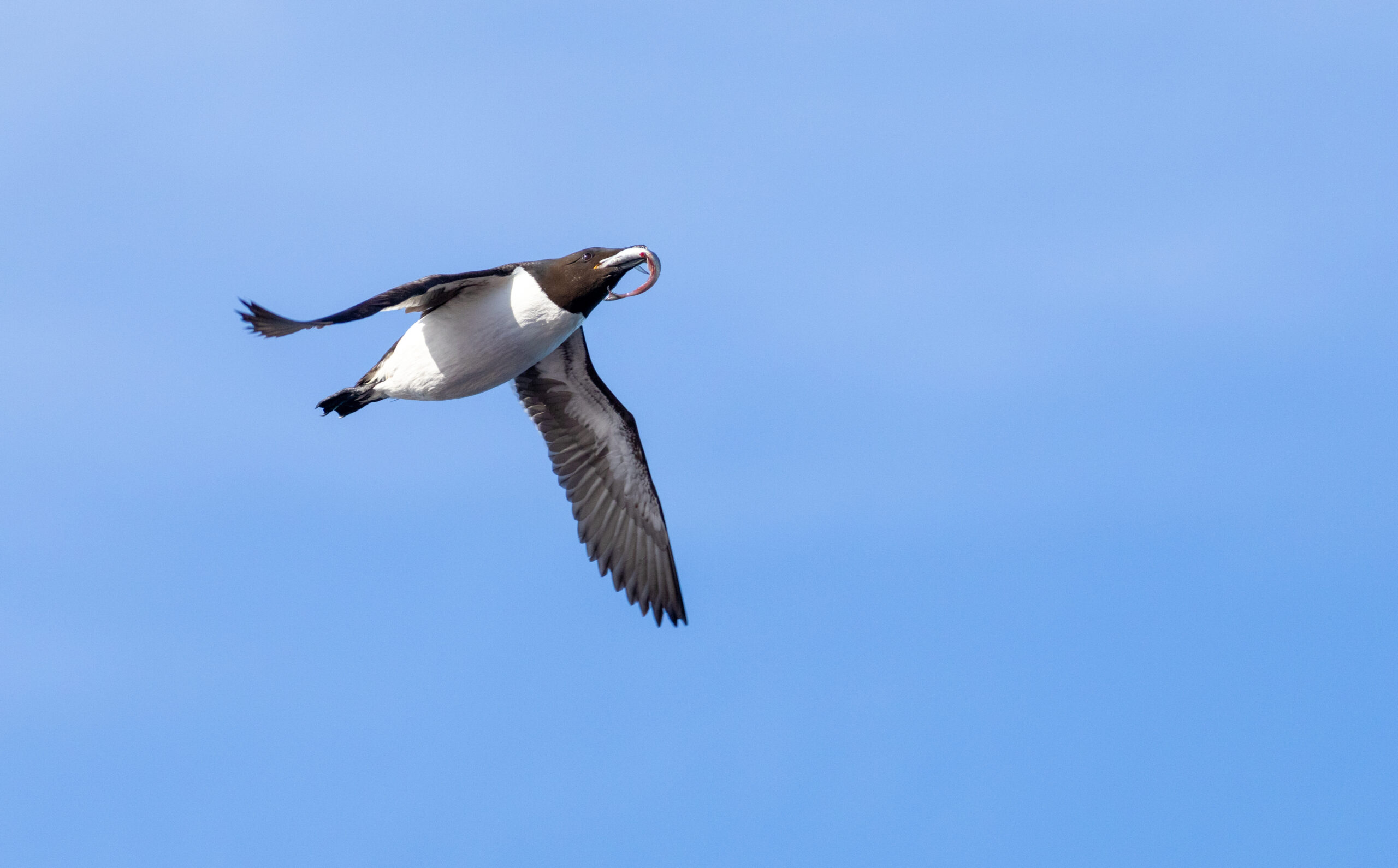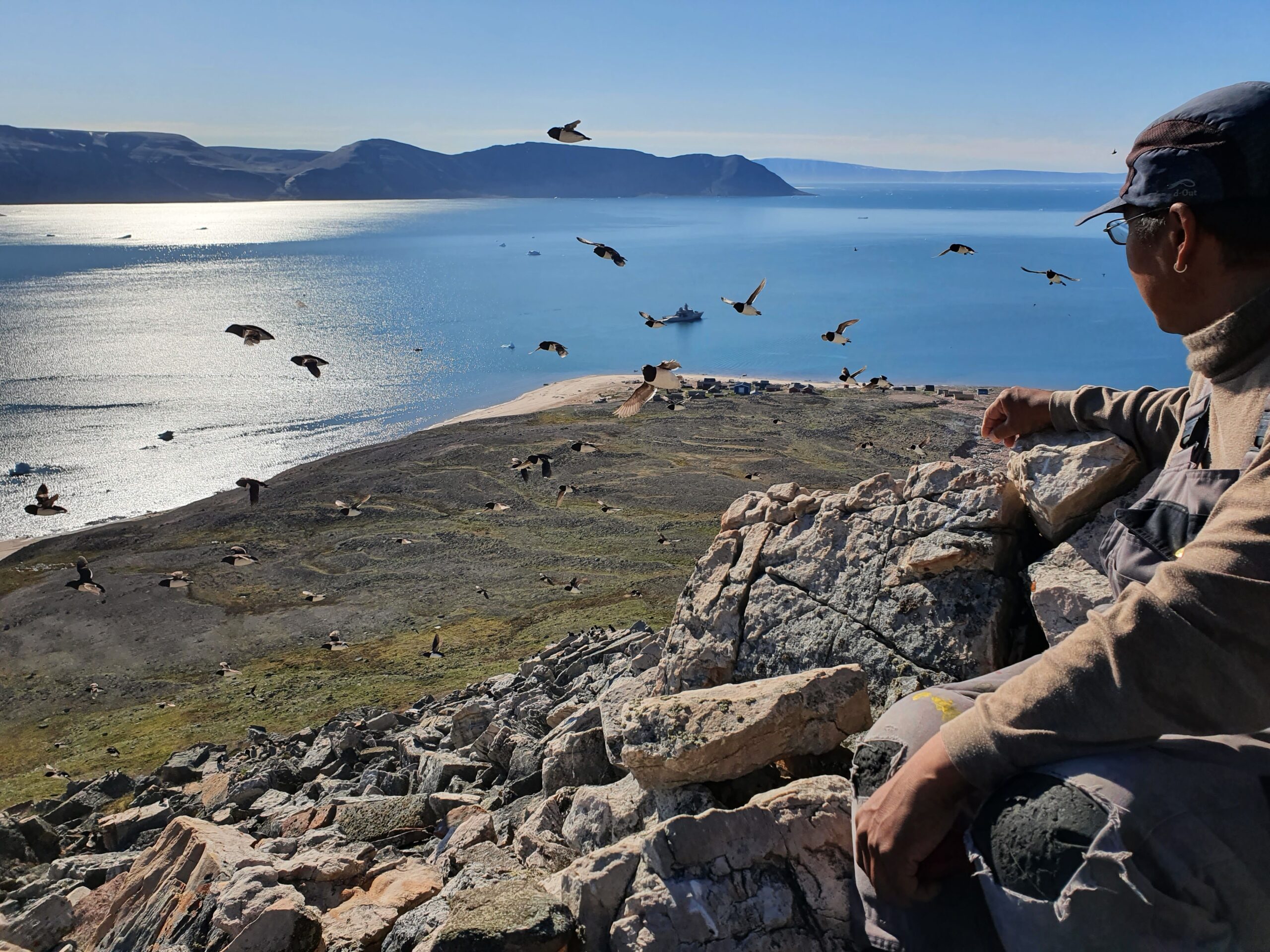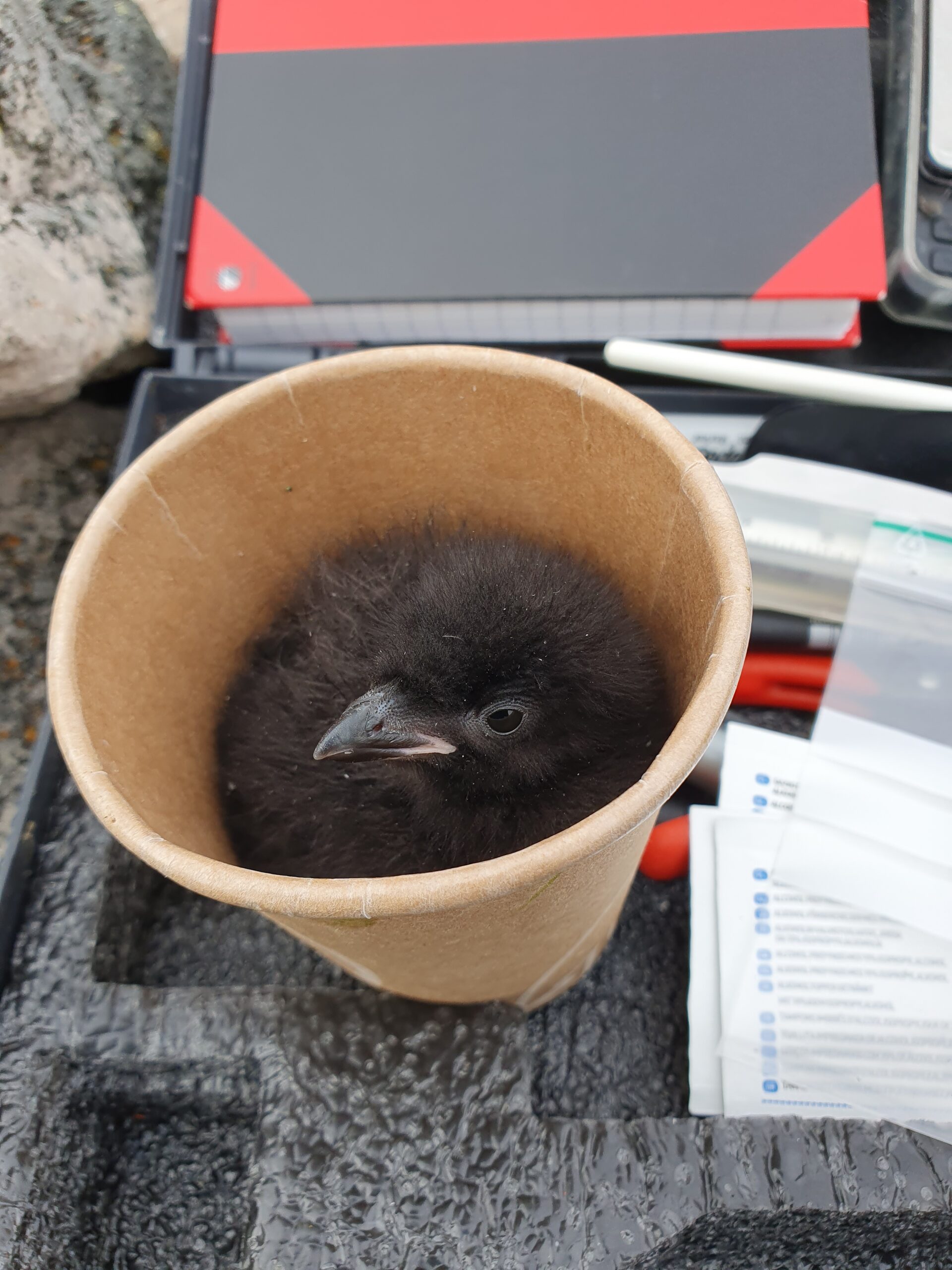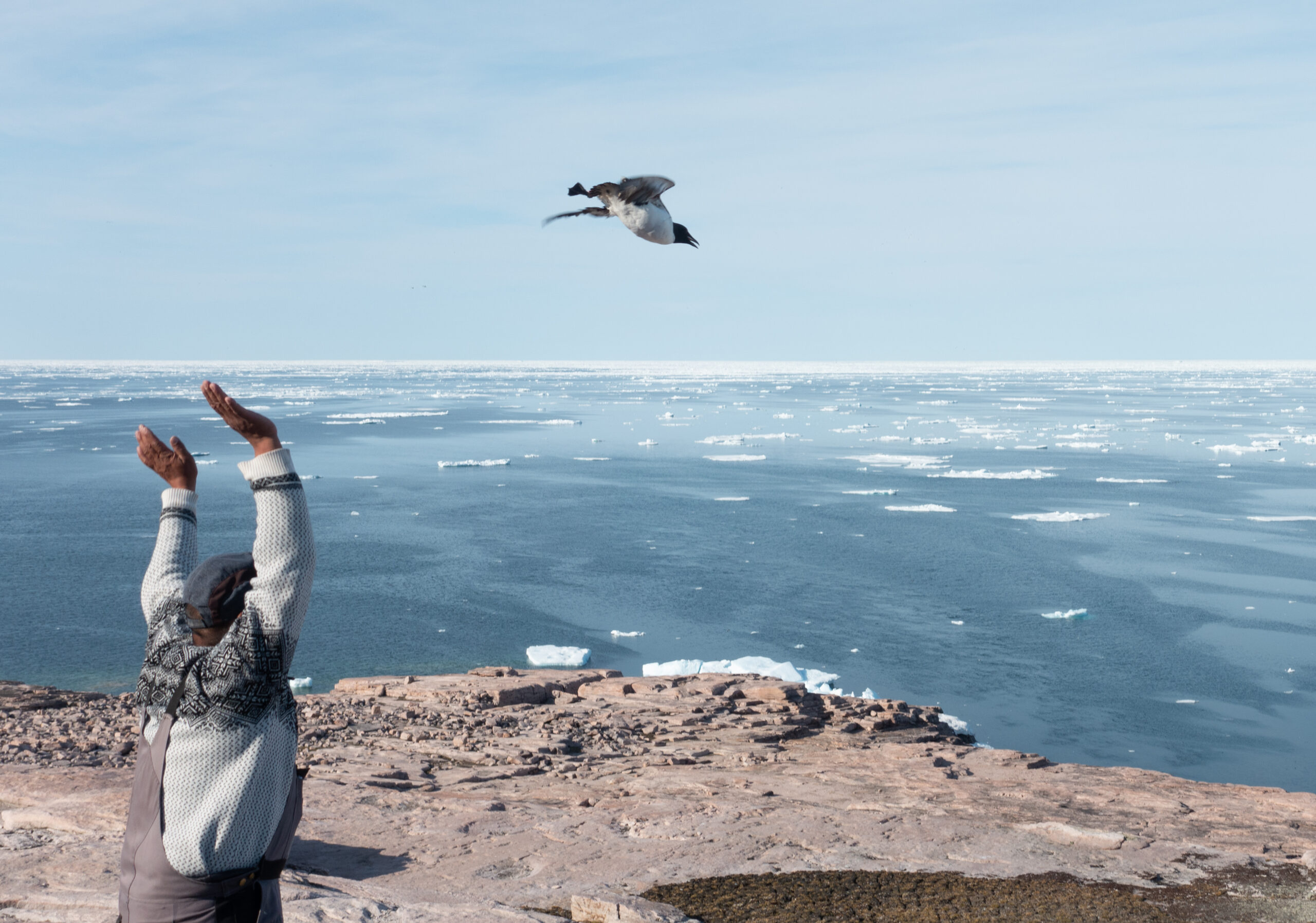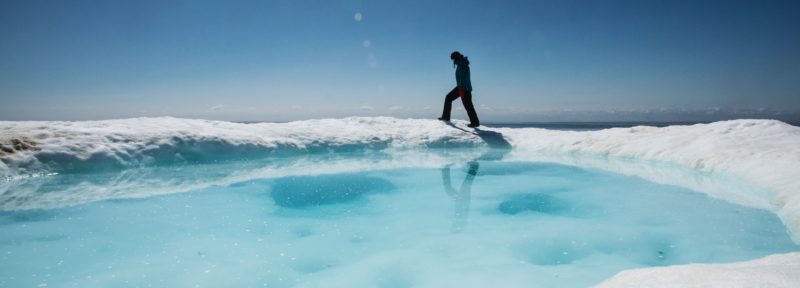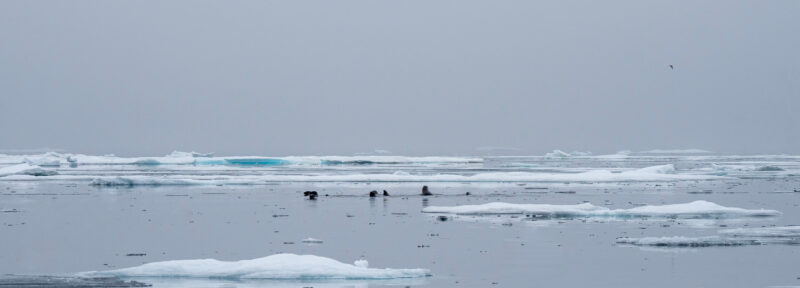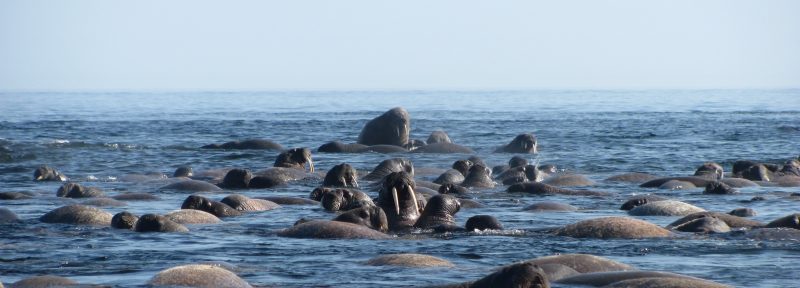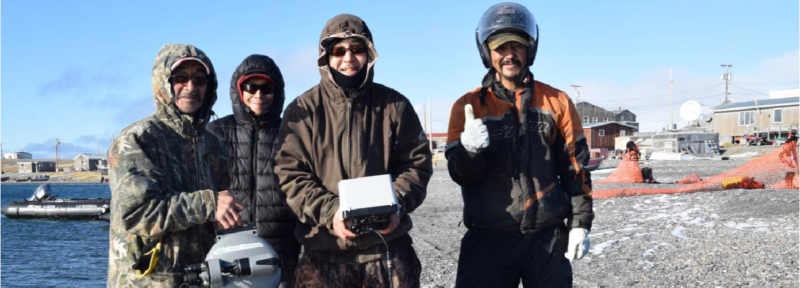The Ice Bridge: A Haven for Seabirds in Pikialasorsuaq
A thick-billed murre with Arctic cod in its bill, returning to feed its chick.
Credit: Knud Falk
Welcome to the Ice Bridge, a series about the importance of the North Water Polynya. Through interviews with experts in Canada and Greenland, we’re learning more about one of the Arctic’s most fascinating ecosystems.
In early spring, when ice still covers most of Baffin Bay, millions of seabirds migrate north to the open waters of Pikialasorsuaq, a huge polynya between Greenland’s west coast and Canada’s Ellesmere Island, where they feed and raise their young.
“Pikialasorsuaq is a very special area. It’s the most productive open water in the Arctic,” said Anders Mosbech, a biologist at Aarhus University who studies seabirds in Greenland.
An estimated 30 million little auks — 75 percent of the world’s population of this species — flock to the rocky cliffs along the shores of Pikialasorsuaq, building nests among the stones and foraging for food in the nearby ocean.
“In the spring, you can see whole mountainsides of them, flying around in circles and singing,” said Mosbech.
Little auks circling the colony. An estimated 30 million little auks flock to the rocky cliffs along the shores of Pikialasorsuaq each year.
Credit: Anders Mosbech
What attracts the little auks, as well as other seabirds like thick-billed murres and kittiwakes, is the abundance of food found in the waters of Pikialasorsuaq, also known as Sarvarjuaq in Nunavut. After an ice bridge forms each winter in Nares Strait on the northern edge of the polynya, strong winds and sea currents push away ice, allowing sunlight to penetrate the water. That encourages the growth of phytoplankton, a key nutrient in the marine food chain, while an upwelling in the water column brings copepods and other crustaceans closer to the surface, providing food for polar cod, seabirds and other creatures.
To feed their chicks, both male and female little auks dive up to 40 or 50 metres deep in the ocean and suck in copepods, spending hours to collect as many as 500 per trip in large pouches under their beaks. After flying back to shore, they feed their young by expelling the copepods into the mouths of hungry nestlings.
“They collect the copepods one by one, so it’s an amazing amount of work for them,” Mosbech said.
His team of scientists is studying the diet of little auk chicks to monitor the impact of climate change on this species. To do that, they snare adult little auks upon their return from foraging, remove and sample their pouchful of copepods, and record the data. For example, one important measurement is the size of the copepods because if little auks can only find smaller crustaceans, they must collect more per trip, which requires additional energy and reduces the amount of nutrients their chicks receive.
A little auk chick in a cup, ready to be put on a scale. The cup doesn't hurt the birds and makes them easier to weigh.
Credit: Anders Mosbech
More than half of Greenland’s population of thick-billed murres also migrate each spring to Pikialasorsuaq, nesting on rocky ledges above the seas and spending their days diving up to 200 metres to catch polar cod and large crustaceans.
“They are fantastic divers because of their small wings which allow them to dive deeper. But that means they can’t fly very well,” he said, joking that these birds are “half penguin.”
In August, thick-billed murres begin to migrate more than 2,000 kilometres to their winter home in the ocean east of Newfoundland. But since the chicks aren’t yet able to fly, the male birds gather up their young and swim with them for six weeks to the waters east of Baffin Island. During this time, their offspring grow flight feathers and the adults complete their yearly moult before they fly together to their destination. Meanwhile, the females “hang out” in the polynya before arriving in their winter home in late October or early November. Scientists track the movements of seabirds by attaching small devices that measure light and use that data to determine their locations.
Mosbech and his team are also studying the diet of thick-billed murres to determine whether it has changed from 30 years ago. Three years ago, scientists began working on this research with local hunters from the village of Siorapaluk. Local residents know how to safely navigate changing ice conditions and transport the scientists by boat to the bird colonies along the coast. They also help catch the birds, take samples and record data, he said.
“Last year, we were delayed a week by bad weather and the hunters caught the birds, took samples and measurements and recorded the data for us. It went very well,” said Mosbech.
A local hunter releases a thick-billed murre.
Credit: Anders Mosbech
An exchange of knowledge between scientists and hunters is an important part of this collaboration. Hunters share their observations about how climate change is affecting this region, where warmer temperatures have meant that boats have replaced dogsleds for most hunting trips and “rotten ice” during thaw and freeze-up halts any travel. Scientists share their methodology with hunters and explain how their research results may be used to help set regulations for maintaining a sustainable harvest. Both thick-billed murres and kittiwakes have regulated hunting seasons, while little auks do not.
The biggest threats to seabirds in the polynya are related to climate change, Mosbech said. As warming temperatures cause the ice bridge to collapse more often, ice will drift into the open water of Pikialasorsuaq, limiting sunlight and reducing biological productivity. That would limit food for seabirds and reduce their populations, which are currently at healthy levels.
At the same time, other species are moving north, like smaller copepod species and capelin, which could cause changes in the food chain and reduce the number of polar cod, he said.
“That is certainly a challenge for the whole social-ecological system of the North Water,” he said.
Since seabirds migrate between countries, working at an international level to protect their habitat in Pikialasorsuaq, as well as wintering areas in the North Atlantic, is more important than ever, Mosbech said.
Want to learn more? Read the first post in the series here, or watch this video to learn more about how the polynya works. This installment will soon be available in Greenlandic and Danish on the Oceans North Kalaallit Nunaat website.
Ruth Teichroeb is a regular contributor to Oceans North and former communications director. She lives in Sidney, B.C.

